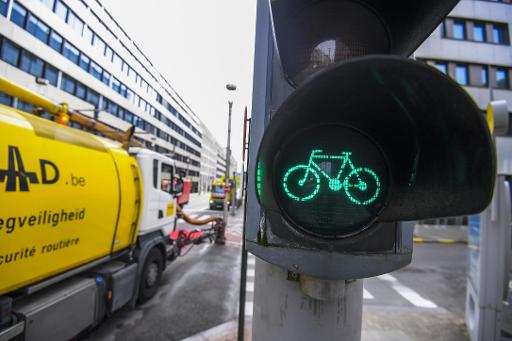In a little more than two days, the default maximum speed allowed in the majority of Brussels will become 30km/h.
Ahead of the launch, Brussels Minister of Mobility Elke Van Den Brandt (Groen) and Brussels Mobility issued a statement of five key points to remember ahead of the launch.
- The standard speed is 30 km/h everywhere, except on certain major roads. There the speed is limited to 50 or 70 km/h, which is specifically indicated. In residential areas, the maximum speed is 20 km/h.
- This is the highway code. Everyone must respect this speed limit, even on separate bicycle paths or private sites. The only exceptions are trams, snow ploughs and emergency vehicles.
- The risk of death for pedestrians is five times higher at 50 km/h than at 30 km/h. In the car, the risk of death or serious injury (for drivers and passengers) is 15% at 30 km/h, compared to 45% at 50 km/h.
- Reducing speed from 50 to 30 km/h halves road traffic noise. Between 2.5 and 3.9 dB(A) depending on the road surface. The City 30 also creates more peace and quiet and leaves more room for travel by bike or on foot.
- The police will carry out checks from 1 January 2021 onwards. Penalties will be imposed, as for any violation of the road code. The intention is not to increase the number of fines or 'flash everybody', but to encourage road users to spontaneously respect the 30 km/h rule.
At all entrances to the capital, specific signs inform motorists about the new rule.
The placement of 50 km/h and 70 km/h signs indicating exceptions on the main roads has also been completed.
During the first weeks of 2021, the 6,000 'start' and 'end' zone 30 signs will be removed in the different districts.
The Brussels Times

